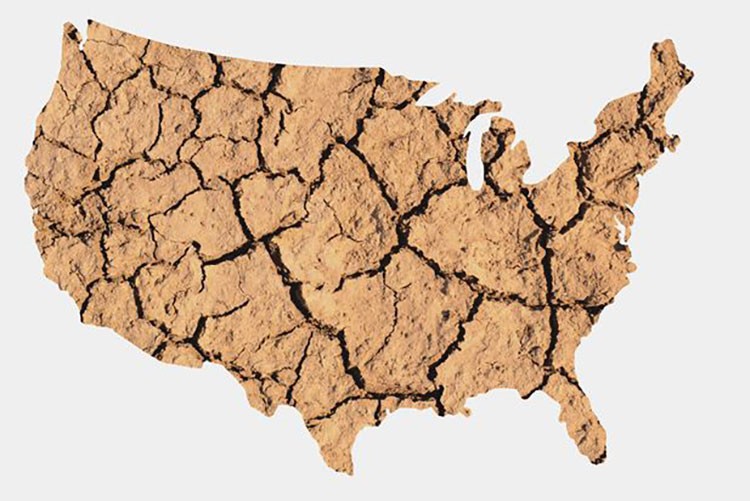
So, you’re a climate change prepper looking for where to escape climate change in the United States. Assuming a target date of 2050 to 2060, the worst of it may not hit in your lifetime, but maybe you’re wondering where your children or grandchildren should live.
Moving to or living in safer locations now could give grandkids a leg up when everyone else is on the move. They’ll be ahead of the masses looking for better places to live. But where where should you go? It’s a question many people are beginning to ask themselves.
Matthew Kahn has even written a book on the subject.
- Used Book in Good Condition
- Kahn, Matthew E (Author)
- English (Publication Language)
- 288 Pages - 06/25/2013 (Publication Date) - Basic Books (Publisher)
First off – good luck finding anywhere free from the effects of climate change. Between increased rates of droughts, wildfires, extreme heat, and flooding, every place will be impacted. Nowhere on the planet will be immune to what will come. That said, not all areas of the United States will be hit in the same way. Some places will be better than others. Let’s look at where those places are, so you can buy real estate there today, and better survive tomorrow.
Much of the information here has come, in part, from the Fourth National Climate Assessment, which looks at projected impacts by area. Let’s start with where you don’t want to live.
The climate change risk in your state can now more easily be assessed via the research performed by the First Street Foundation. You can search a property via their Risk Factor site. Just punch in the address and see what you get.
3 Worst Places to Escape Climate Change in the U.S.
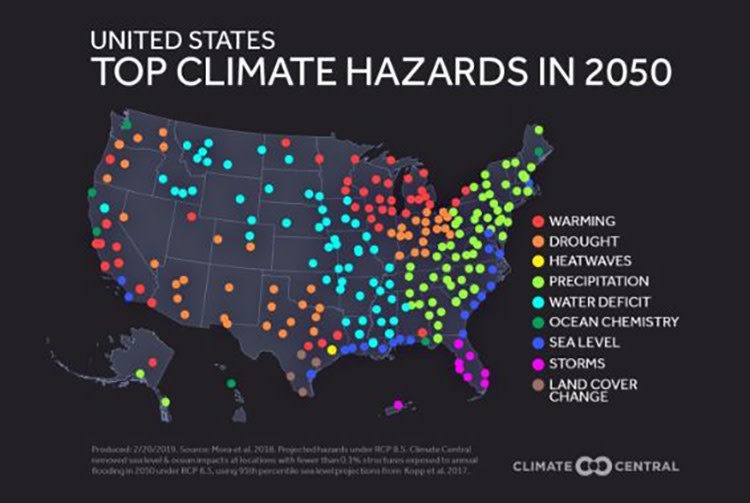
1 – Coastal Areas
It should go without saying that coastal areas will be some of the hardest hit. Some coastlines will be hit worse than others, however. The East Coast of the United States, for example, will probably have it worse than the West Coast. Sea levels on the East Coast are rising faster than they are globally, and the East Coast also has to contend with hurricanes. Summers could be rough. Cities facing the worst of this include Miami, New Orleans, Washington D.C., and on the West Coast – Los Angeles. The Northeast specifically will experience the highest rate of sea-level rise in the entire U.S.
Logic might flow that residents of these cities should plan to move inland now, to places like Atlanta, Houston, or Phoenix. Of course, Hurricane Harvey gave Houston a taste of what it will experience. Phoenix is in the middle of the desert and will face even drier conditions. And Atlanta is one of the fastest-warming cities in the country!
2 – Places with Drought and Heat Waves
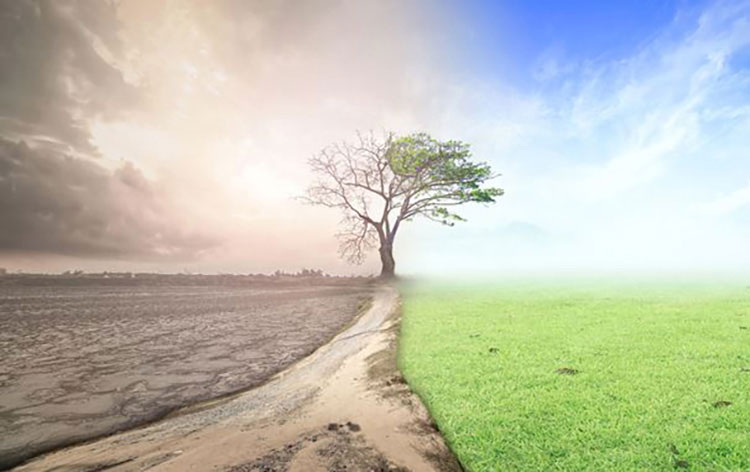
Places subject to water stress will be less inviting when climate change hits full-swing. Specifically, the Great Plains and the Southwest. These areas of the United States will only get drier as the planet heats up. The water supply that comes from the Sierra Nevada mountains is projected to drop by two-thirds by 2050. Water levels in Lake Mead are already setting record lows.
The Midwest will experience more crop diseases and pests. Corn and soybean harvests will decline and be less predictable overall. This will be coupled with rising temperatures, making this area feel like present day Las Vegas.
As for the Southern Great Plains (Texas, Oklahoma, and Kansas), these areas will get a good mix of climate change impact: heat waves, tornadoes, ice storms, hurricanes, and hail. Summers will be longer and hotter. There will be more drought. The Texas Gulf Coast specifically will encounter stronger hurricanes.
Drought will also hit the Pacific Northwest, which might sound strange given how much rain it can get. However, that area of the United States relies on snowpack for much of its drinking water. That snow will be replaced by rain, which will immediately flow downstream, causing mudslides in some places. This is opposed to the snowpack in the mountains now, where water gets stored.
South of there, in the Southwest, things will be worse. In fact, any place that relies on the Colorado river is in trouble. This is the hottest and driest area of the U.S. right now, and you can expect that to continue. The area is already running out of water, yet people continue to move there, putting even greater strain on water reserves. Temperatures will soar. Droughts and megadroughts (lasting years) will become common.
3 – Places Prone to Wildfires
The Western United States will experience both drought and increased heat, creating challenges for growing crops and containing wildfires. An increase in wildfires, of course, also results in poorer air quality as the smoke drifts eastward.
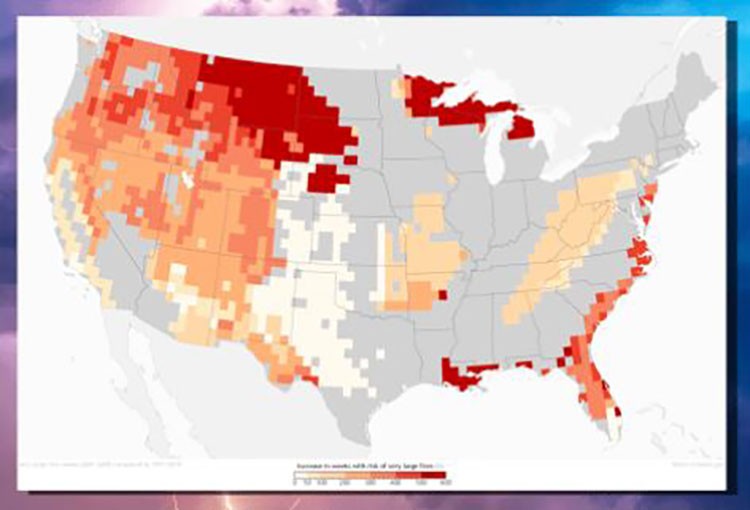
The picture above indicates areas with heightened risk of wildfires. As you can see, the Southeast is also expected to see an increase in wildfire frequency. The Northeast looks well-positioned when it comes to wildfires, but residents there, living largely on the coast, face other challenges.
Hawaii? No. The islands will experience stranger weather patterns and be faced with trying to protect their most valuable asset – drinking water. Rainfall will dwindle and rising sea levels will compromise groundwater supplies. Hawaii will face some serious threats.
Alaska might come to mind. It’s cold and it has a lot of land away from the coast. Yes, but temperatures are rising there as well, and Alaska’s melting permafrost could unleash ancient viruses and bacteria that humans have lost immunity to! Alaska’s wildfire season is also getting worse.
Best Places to Escape Climate Change in the U.S.
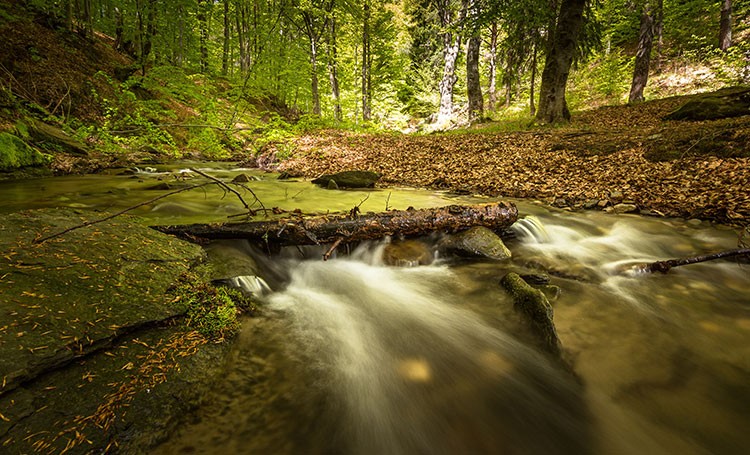
I covered the places you don’t want to live, so where does that leave us? Please you do want to live if running from climate change.
Some of the best areas to escape climate change in the United States include the Upper Midwest, Ohio, Pennsylvania, upstate New York, New England (away from the coast) and parts of Montana. People are also moving to northern Minnesota as a climate “safe haven.”
As time goes by, however, more people will try to escape climate change in the United States by migrating to these areas. That then taxes the water sources. Climate change will have a compounding effect. Groundwater will be compromised.
I identified problems residents of the Midwest will face, but really, there are worse places. So if you’re living in the Midwest already – stay put and expect company!
Upstate New York and much of New England (away from the coast) are good places to be. These areas have strong drinking water supplies and are already cooler than much of the United States. These rural, inland areas will not experience as much drought, tornadoes, hurricanes, or wildfires. Burlington, Vermont is a beautiful city and apt to experience an influx of people.
Four Criteria Used
I considered the following four criteria when looking for the best places to escape climate change:
- Cooler Location – The cooler a place is now, the more room it has to heat up.
- Away from the Coast – Beyond rising sea levels threatening housing and business, being further away from the coast means fewer storms.
- Water Security – You want a place that is not dependent on snowpack, aquifers, or reservoirs for water.
- Elevation – Being at higher elevation will help beat the heat and escape flooding.
You may have different criteria to consider, personal matters such as family location, costs of living, etc. These are not climate change criteria, but – if seriously considering a move – factors nonetheless.
Looking for a Spot Outside the United States?
If you are from outside the U.S., or want to move to another country, you can do worse than Canada (anywhere away from the coast).
Greenland also comes out as a winner. The country has more fresh water than it can use, and the annual melt it will experience from global warming means that won’t change anytime soon.
Further Reading
Suggested reading for more on this subject:
- I’m Leaving the West Coast – The Atlantic
- Opinion: Every Place Has Its Own Climate Risk – New York Times
- The Uninhabitable Earth: Life After Warming by David Wallace-Wells
- The Future We Choose: Surviving the Climate Crisis by Christiana Figueres
- The New Map: Energy, Climate and the Clash of Nations by Daniel Yergin

1 comment
I am 71, always lived in the Syracuse/Utica/Plattsburg areas, just more rural or small town/village/city, still here.
Your assessments make much more sense to me than so many other sites’, options online. Currently in Oneida City, but wondering where I could stay local but still have the option of a well? It is great to have city/OCWA water and city of Oneida sewer. But just in case? And solar? A source for the fireplace I do have, that doesn’t require any electricity? People I know locally think their pellet and coal stoves will carry them through a power shut off- but all rely on batteries good for 15 minutes in the event of major power loss.